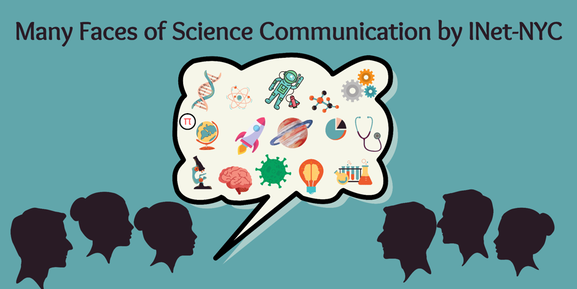|
Words by: Dr. Jeannys F Nnemnbeng Edited by: Dr. Gabriele Baniulyte Spring is finally here, and INet, of course, did not miss it! Spring is nature's way of saying, 'Let's party!- Robin Williams Although today’s weather does not reflect it (heavy grey clouds and sprinkling rain everywhere. Booo!!), a couple of weeks ago, INet-NYC organized a picnic in Central Park and let me tell you - it was awesome. After long winter months in NYC, any warm weather would make anyone (me included) overjoyed, but this day had a feel to it that made it so much better. Gaby, Taiane, and I arrived at the designated location and were waiting for other scientists to come. We were a bit concerned because the lawn was so packed that our little INet-NYC sign looked like a drop in the ocean. However, as fate always smiles on the resilient, a group of postdocs who planned to come to our event stationed their picnic blanket a few feet from us. So, we combined our spots and started to mingle. They were great. Let me introduce you to a couple of them. Let me start with the flamboyant Ukti! She is a postdoc at Albert Einstein College of Medicine, and she is part of the leadership team at Women in Science (Einstein Women Networking Group). They work tirelessly to support and empower women across all scientific disciplines. And, frankly, we should all support that. Next in line is the one and only Vikas M.! He is a postdoc at Columbia University, and he is part of the leadership team at the Columbia University Postdoctoral Society (CUPS). You can find out more about them on their website or their LinkedIn. Vikas brought with him a hilarious game called Exploding Kittens. I had never played this before. It mixes strategies, weirdly cute cat drawings, and lots of laughter. I mean, who can go wrong with that! Be on the lookout for collaborative events with him in the future. Last but not least, I met D. (aka Sophia), a Korean neuroscience postdoc at Einstein. She is not only smart and skilled in what she is working on, but she is also a savvy indoor rock climber. I mean what? That was so cool. By the way, I got an insider tip (thanks, D!) that the indoor rock climbing venue in East Harlem is the place to go to (Movement Harlem). Alright, folks, that’s it for now. I hope you have a wonderful day, and as always, keep on shining!
0 Comments
Words by: Dr. Jeannys F Nnemnbeng |
Archives
May 2025
Categories
All
|






























 RSS Feed
RSS Feed